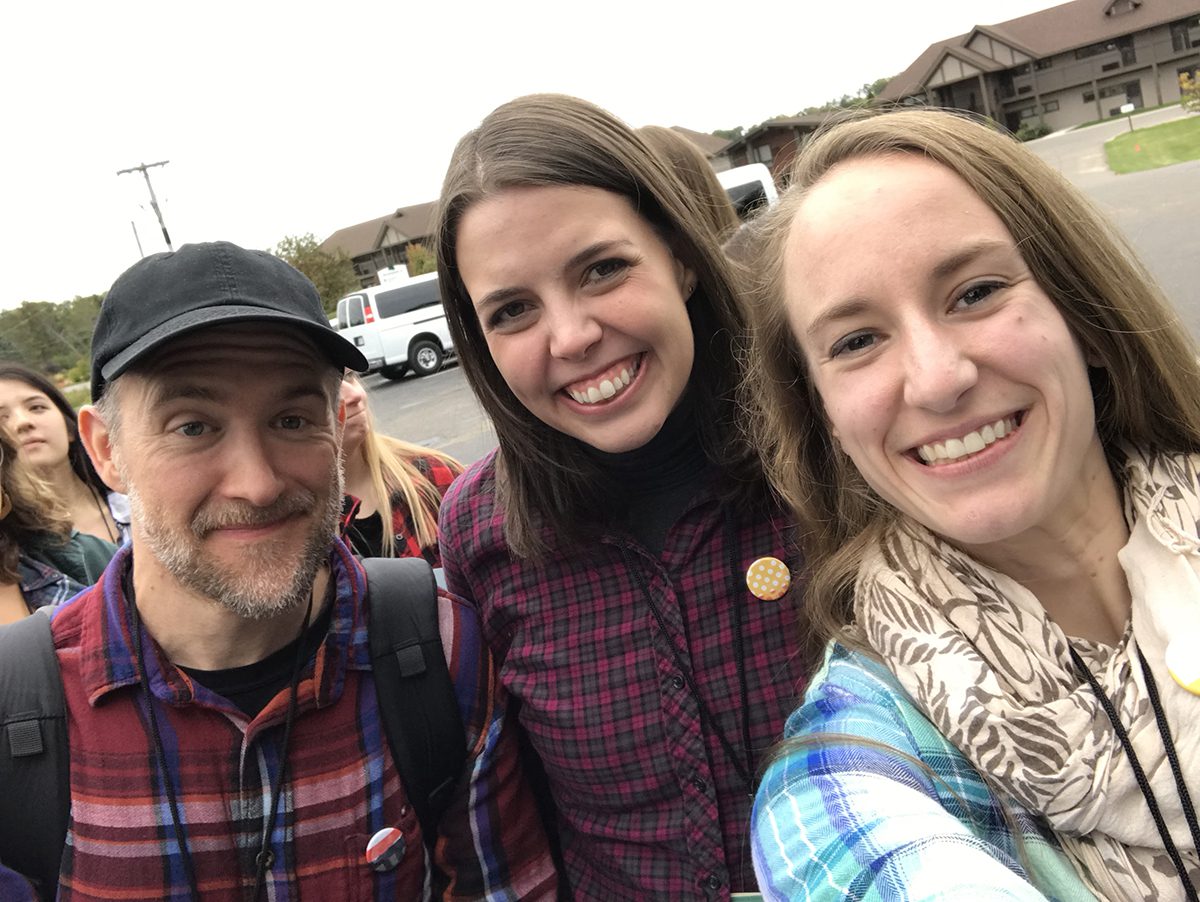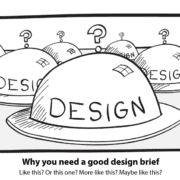Notes from Design Camp 2019
Every October, MJM sends some of it’s creative team to the fall wonderland of Branierd, MN to attend Design Camp, an informal design conference with nationally renowned speakers and special workshops. Read our three campers’ reflections from this year below!
Alison
What do I love about Design Camp? First there’s the swag bag, then it’s spending time outside the office with the design team, and then there’s beautifully thoughtful powerpoint presentations that designers put together (it can be done!). The best parts are the ideas that I chew on afterwards. This year’s featured keynotes focused less on immaculate portfolios of design work and more on their purpose and how design lives in the world: as public service at White House, alongside other artists and musicians, and as a tool for huge, international corporations to work more iteratively.
One theme that stood out was the idea of love. Love for yourself, your colleagues, your clients and your users. Ashleigh Axios gave an example of putting together rapid-fire graphics that support statements made during the State of the Union address given by the president. To a room of designers, she admitted it wasn’t beautiful, crafted work, but it was accurate, legible, and delivered on time. As designers and problem solvers, we make things for people. And we should make things to the best of our ability because people deserve that.
Kirstie
This is my third time attending Design Camp and while I always leave inspired to do new work, this year I noticed a different theme to a lot of the discussions. Instead of hearing about how I should be hustling every minute of every day, I heard about the importance of recharging creatively. Instead of leaving with a list of design topics to research and skills to hone, I left with a list of what could be better described as self-help books.
One example of this was a workshop I attended called “How to Speak Unicorn: Translating Design for the Digital Age” led by Michelle Schulp. Based on other web design workshops I’ve attended, I was expecting to be inundated with a list of new software and coding languages I was supposed to learn. But instead, the presentation focused on something I’m not used to hearing about in web design: interpersonal communication.
Schulp acknowledged how designers who crossover to digital are often expected to be a “unicorn” skilled in every stage of the process. But, she said, rather than being an expert in every aspect of web development, it’s more important to be able to communicate with people who are. Rather than trying to force print designers to learn Python, we should be working on soft skills like active listening that allow us to bridge disciplines and leverage strengths. My overall takeaway from this year’s Design Camp was that to be a better designer, first you need to be a better person. Software will come and go, but things like empathy and compassion will always be a vital part of the designer’s toolbox.

Tim, Kirstie, and Alison in their Plaidurday finest at Design Camp 2019.
Tim
One aspect of Design Camp I enjoy every year is that the ideas and the concepts I hear there percolate in my mind for months afterward. One idea that sunk particularly deep this year was the importance of being intentionally and personally connected with the creative community around you.
Creative business consultant Emily Cohen admonished her audience to “support everyone you know.” Creative work can be discouraging, isolating, and lonely work at times, and many people don’t have the benefit of working closely with like-minded people. She emphasized that the work we do is always personal before it is professional, and we ignore that truth at our peril. And she also pointed out that wanting to be supportive isn’t enough—we also have to be intentional about supporting the people around us.
I‘m blessed at MJM to work in close proximity with four incredibly talented designers (not to mention the rest of our MJM team), and it can be easy to take that degree of connection for granted. We can Slack the other designers with questions, send over screenshots of a sticky design challenge, or even just doodle our problems out on the dry erase walls around our tables. And because it‘s so easy, I sometimes underestimate how much I‘m learning from them, and how valuable that is.
Being purposeful about “supporting everyone you know” sounds simple on the surface, but Cohen’s talk echoed many of the thoughts I’ve been having in my work with AIGA South Dakota over the past few years. As I’ve worked to support and amplify the good work that other creative professionals are doing around our area, I’ve found that I am more connected to that community. And although it wasn’t my goal, I also find that the more I spend time with the people in our community who are doing great work, the more my own work is improved and sharpened by their insights and advice.
Kirstie is a Senior Designer and Web Lead at Matt Jensen Marketing.






